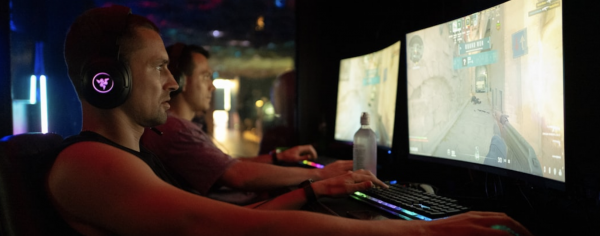Skin Betting Case Odds: What the Numbers Really Show
Skin betting has become a significant part of online gambling. What began as cosmetic items in Counter-Strike has grown into a market where virtual items carry real monetary value. Players now use skins to wager on roulette, coin flips, jackpots, and case openings.
The practice has expanded far beyond casual gaming. Skins are traded on secondary markets, exchanged for cryptocurrency or cash, and used as tokens in casino-style games on third-party platforms. Their value is driven by scarcity, design, and player demand, with the rarest items selling for thousands of dollars. As a result, what was once a side activity within a game now represents a digital economy with global reach.
At the center of this market are the odds. They determine not only what players can expect from case openings but also how credible platforms appear to regulators and the public.
Platform Transparency and Fairness Mechanisms
Understanding how these odds are calculated, and how transparent operators are about them, is key to understanding skin betting itself. Some of the best csgo gambling sites illustrate the mechanisms used to build trust. Reliable platforms use provably fair systems, giving players cryptographic tools to confirm outcomes. Others publish full prize pools before a case is opened, showing every possible result in advance. Case battle formats such as Standard, Split, Crazy, or Clutch add another layer, with odds shifting depending on the structure.
Provably fair systems usually rely on a combination of server and client seeds, along with a nonce, to generate a hash. Players can input these values into verification tools to confirm the random outcome was not manipulated after the fact. While this system is technically sound, only a fraction of players use the verification feature, which means transparency can exist in theory but not always in practice. Industry coverage has also noted how skins are commonly deposited, converted into credits, and used across a variety of casino-style games, reinforcing that transparency around these processes is central to fairness. Since this form of betting is still relatively new, many enthusiasts stay informed by reading in-depth articles and industry news that track the ongoing changes shaping the gambling landscape.
Mathematics of Case Odds
Every case is structured around rarity tiers. Most drops fall into common categories, a smaller portion into mid-tier items, and less than one percent into Covert skins. The rarest outcomes, knives and gloves, sit at around 0.26 percent or roughly one in every 385 cases.
The expected value of a case is almost always lower than its price. A case plus key costs about five dollars, but the average return from the items inside is often far less. Each opening is independent, so the odds do not improve with repeated attempts.
A simplified example shows how the math works. Imagine a case where 80 percent of drops are worth thirty cents, 16 percent are worth one dollar, 3 percent are worth five dollars, and 1 percent delivers a fifty-dollar item. The weighted average return is just over two dollars, far below the five-dollar cost. Even with the possibility of a large win, the structure ensures the expected value is negative.
Industry analysts note that loot box systems resemble lotteries in structure. The median result is a loss, confirming that case odds function as games of chance.
Expected Value, Variance, and ROI
Expected value, or EV, measures the likely return over many trials. If the average payout from a case is two dollars and fifty cents, and the cost is five dollars, the return on investment is minus 50 percent. Rare wins can offset losses for a small number of players, but the system ensures the majority finish behind.
Variance measures the spread of possible results around the expected value. It explains why outcomes feel unpredictable. One player may hit a rare skin early, while another may open dozens of cases without success. The probabilities remain fixed, but variance ensures results deviate widely from the average in the short term.
This is reinforced by the law of large numbers. Over hundreds of case openings, the results will converge toward the expected value, which is negative. Long-tail outcomes, such as screenshots of a player opening a high-value knife on the first attempt, are widely shared on social media and give the impression of profitability. In reality, these cases are statistical outliers and do not change the underlying house edge.
Transparency and Fairness
Trust in case odds come down to transparency. Platforms that use provably fair systems allow players to check the random number generator for manipulation. Some let players preview prize pools, making clear what can and cannot be won.
This mirrors standards in regulated U.S. markets where gaming authorities stress that randomness must be clearly stated and independently auditable. Without similar safeguards, unregulated platforms run higher risks of manipulation. In its 2024 Annual Report, the Financial Stability Oversight Council highlighted volatility in digital asset markets and warned that transparency gaps can pose systemic risks, reinforcing why oversight of virtual economies is tightening.
Legal and Regulatory Odds
The legal landscape is changing as regulators push back against claims that using virtual items exempts operators from gambling laws. In the U.S., lawsuits have accused Valve of enabling illegal gambling through its skin trading system, while the Federal Trade Commission has warned that virtual economies now resemble real financial markets, calling for tighter oversight.
State-level debates have also emerged. In Washington, where Valve is based, regulators have pushed for clearer rules on digital assets. In California, lawmakers have discussed whether loot boxes and skins fall within the scope of gambling laws. A 2025 U.S. financial services report noted that regulators are under pressure to clarify which digital asset activities financial institutions may legally engage in, underscoring the momentum for stricter guidance across the sector.
Internationally, Belgium and the Netherlands have classified loot boxes as gambling and forced publishers to change mechanics. The global trend points toward tighter restrictions and fewer grey areas for unregulated skin betting.
Spotting Red Flags
Knowing the odds is only half the battle. Spotting red flags matters just as much. Experts suggest checking whether odds and prize pools are public, systems are provably fair, and withdrawals are clear and fast. Reports show that hidden fees, vague payout rules, and delayed withdrawals are common issues on unregulated platforms. Staying alert to these practices helps avoid unnecessary losses.
- B.E. Delmer, Gambling911.com














